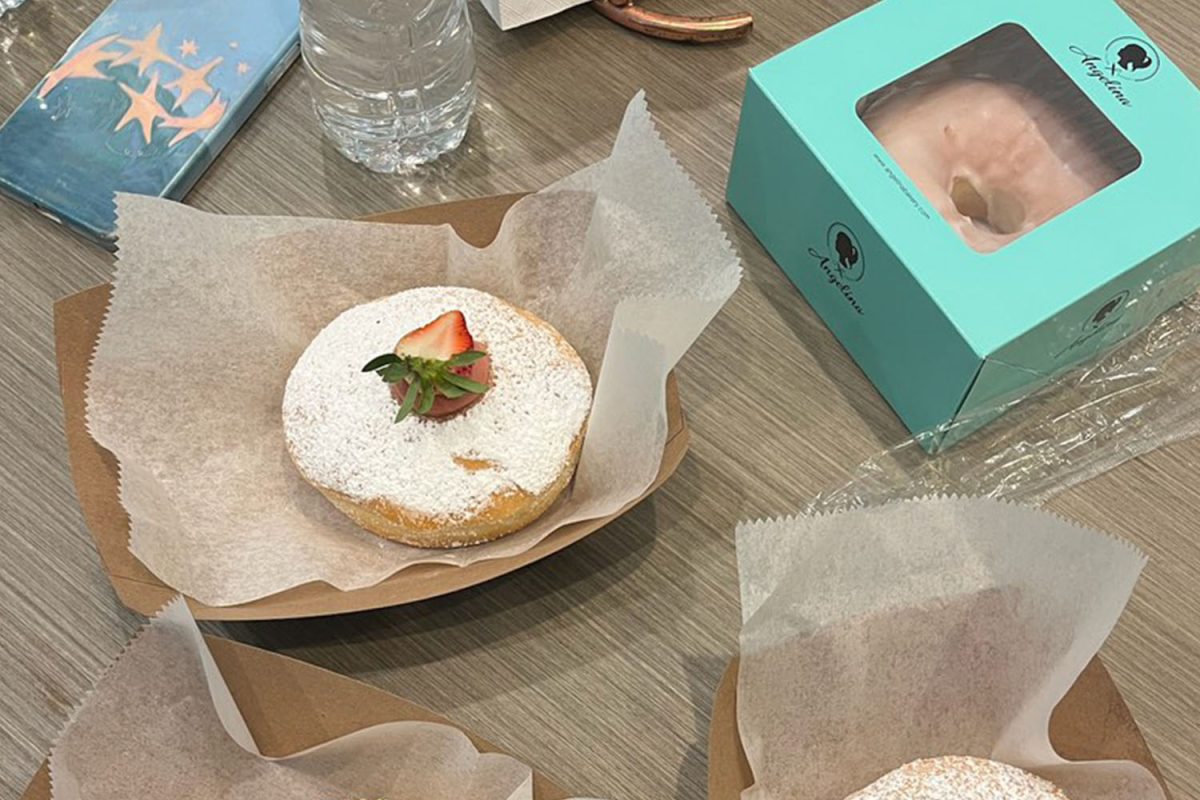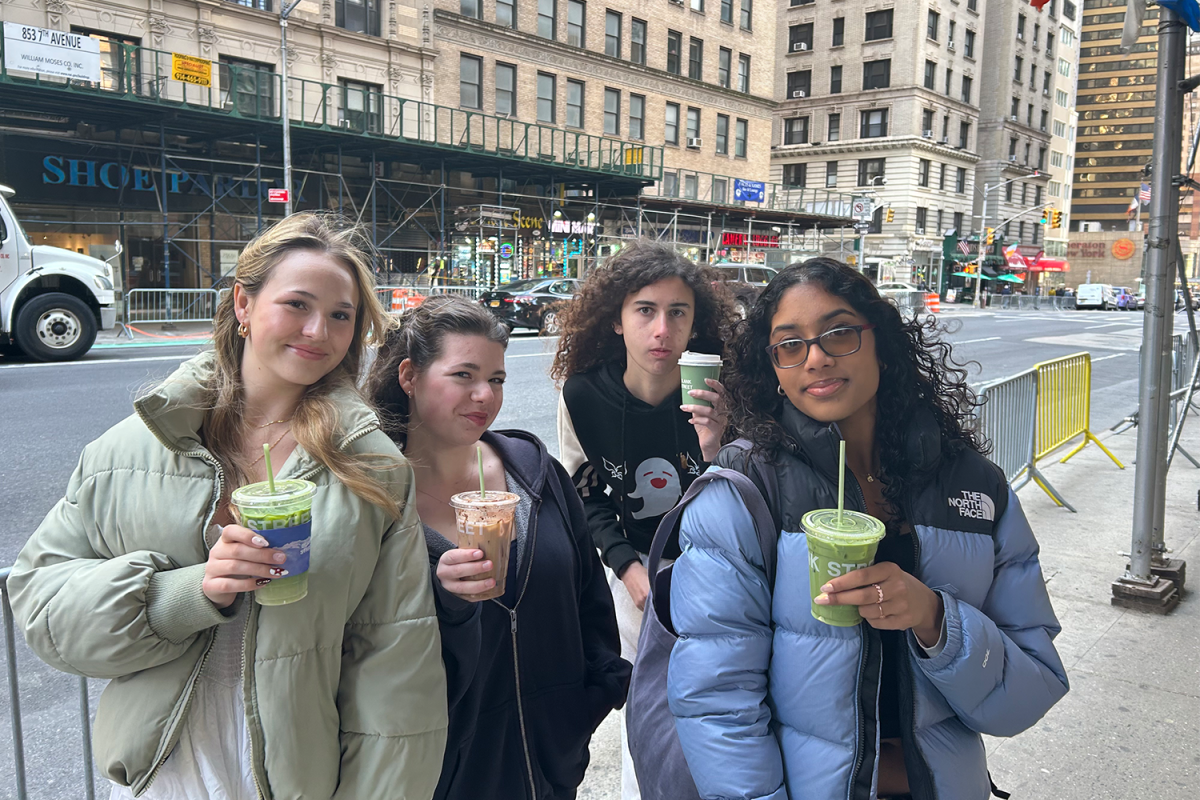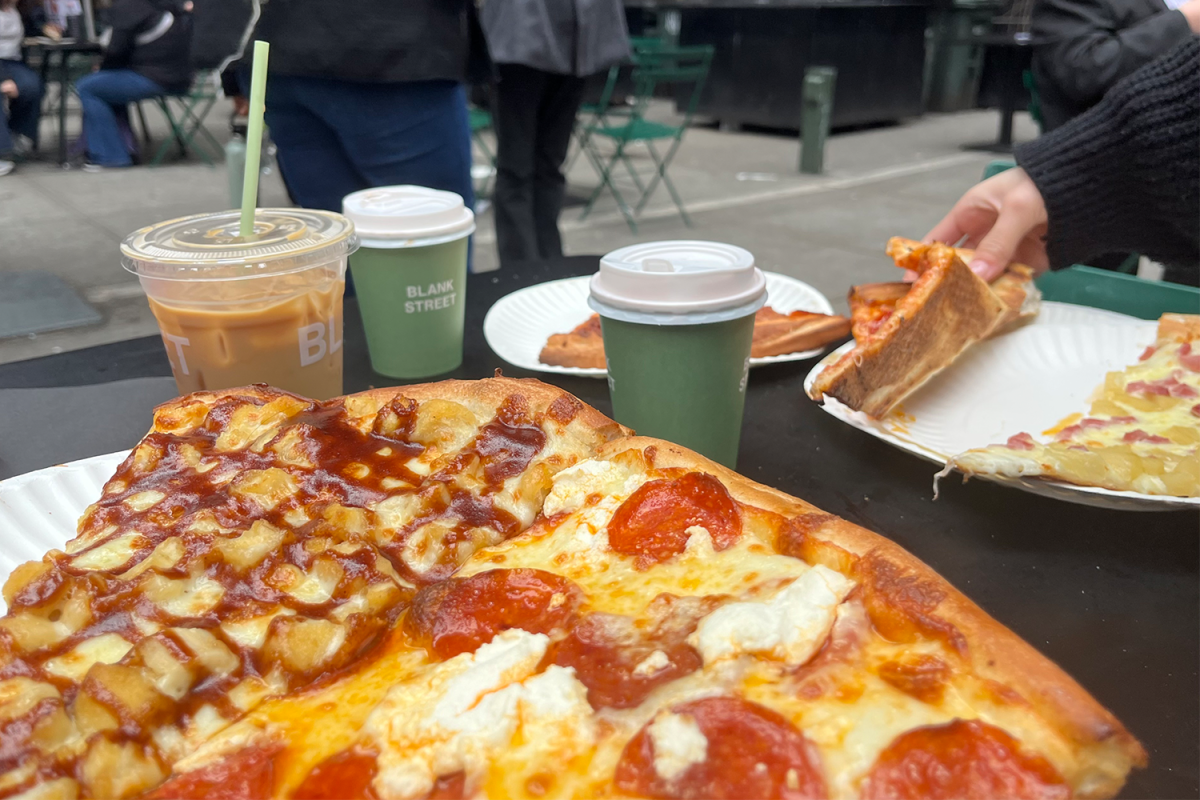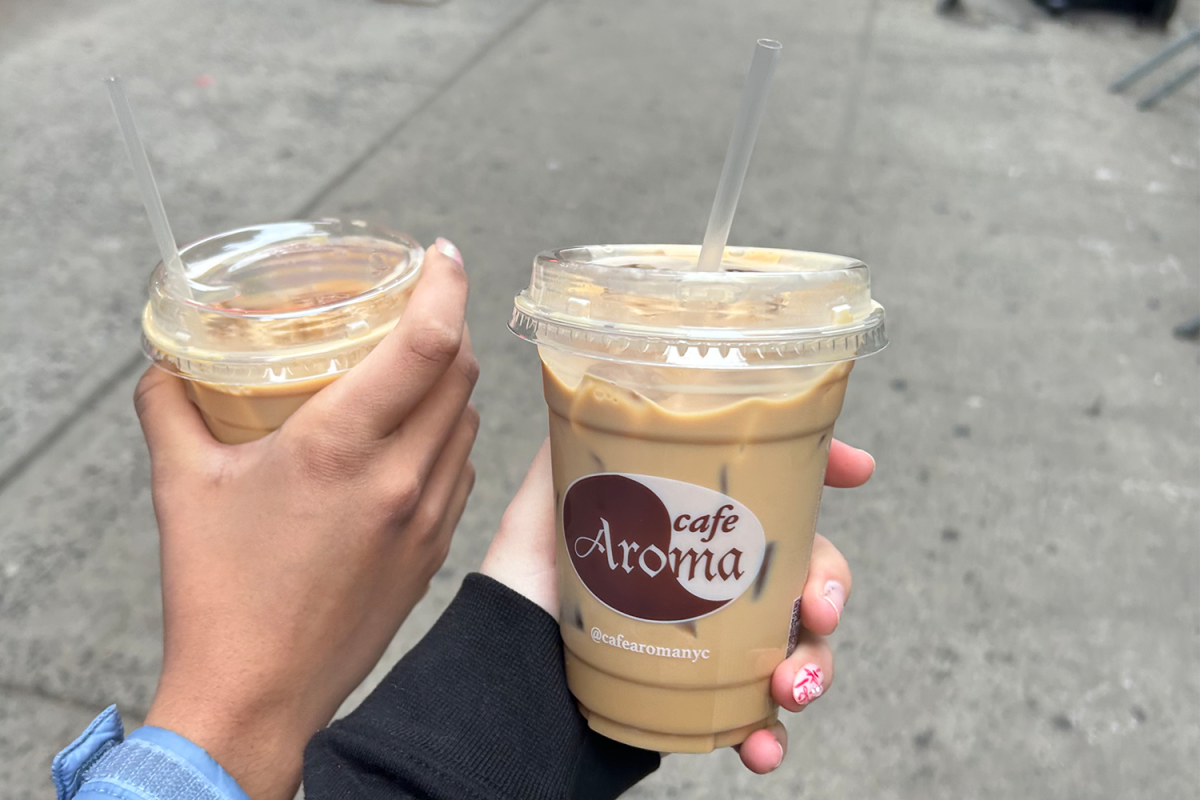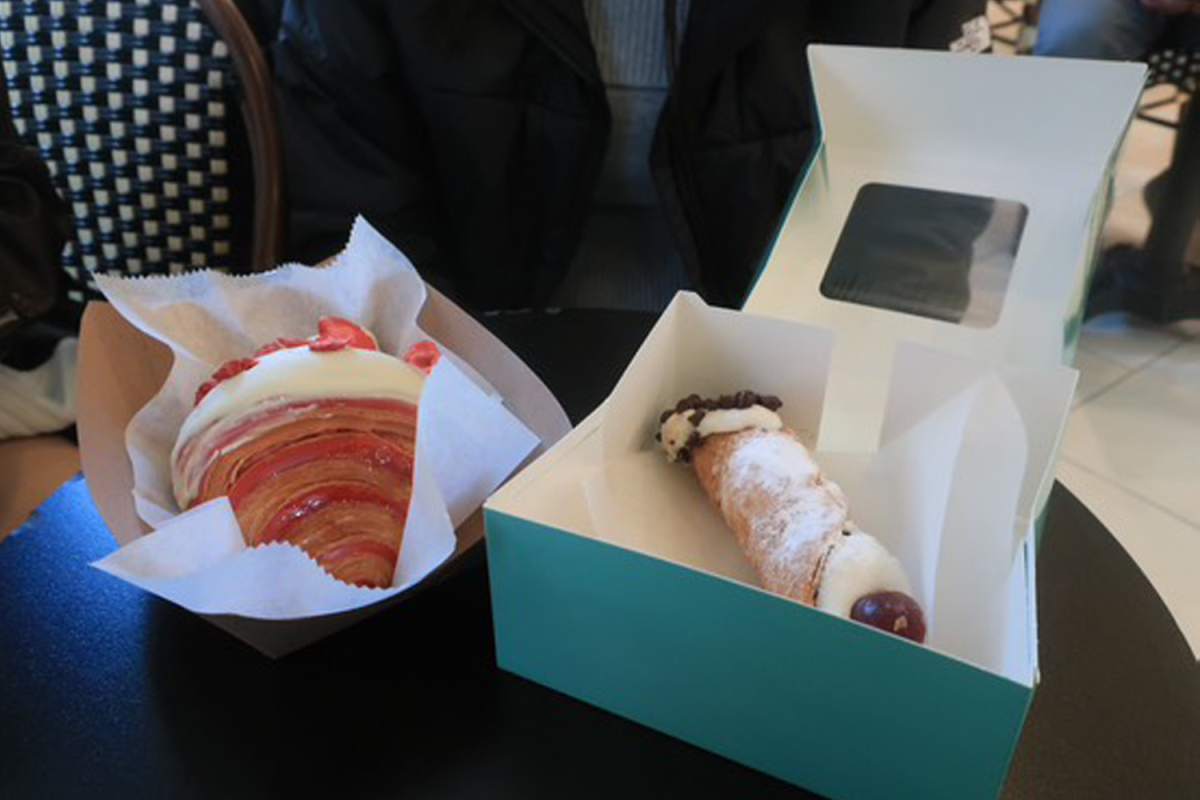A quick snap of the camera, and away the picture goes to be plastered on social media. “The phone eats first.”
There’s nothing wrong with sharing the latest foods, a new coffee shop, or even a local go-to spot, but the rise of aesthetics on social media has created a divide between trendy takes on cultural foods and their origins.
Many think cultural appropriation only applies to what people wear, like misusing traditional clothing or certain hairstyles. But a deeper problem is brought to light with the gentrification of many traditional foods.
“Too often, publications give readers cultural recipes that imply they haven’t done enough research themselves,” said Brooklyn-based food photographer and recipe developer Jillian Atkinson in an interview with Delish.
The 2024 Flavor of the Year: ube
The popularity of the Filipino flavor ube has skyrocketed over the past couple of years. In December 2023, ube was named 2024 Flavor of the Year by the 2024 Food and Beverage Flavor Trends Report, an annual summary by California-based T. Hasegawa USA.
Forbes notes, “Over the years, ube’s popularity has grown due to its rich purple color and Instagram-appeal.” Businesses have profited off the popularity of ube, and while its rise to popularity is credited to its “Instagramablity,” its central role in Filipino food culture has become lost.
According to a Filipino-owned brand, Mamasons Dirty Ice Cream, “in Filipino culture, ube is not just a food but also a symbol of Filipino resilience and adaptability. Even during challenging times, the ube plant thrives, much like the Filipino spirit.”
The London-based brand is a good model for other businesses that want to use cultural flavors while embracing evolution.
“Ube’s allure is set to endure and delight food enthusiasts for generations to come, proving that food is not just sustenance but also a vibrant expression of culture and heritage,” Mamasons Dirty Ice Cream said.
However, its purple appearance seems to be the only takeaway that sticks with people, reducing ube to a mere fad that takes away its symbolic meaning.
“Simply calling it a trend doesn’t do any justice to Filipino chefs or the greater Filipino community,” said chef and former co-host of the “Racist Sandwich Podcast” Soleil Ho in a 2017 Thrillist report.
While some smaller businesses like Mamasons Dirty Ice Cream present ube and its story together, bigger commercialized places often promote these Asian flavors without honoring the heritage that comes along with them.
In an NBC News report on Karen Taylor, a white Oregon business owner, many Asian Americans called her out on her cultural appropriation of congee, an Asian rice porridge.
In the now-edited mission statement on the company’s website, Taylor said she spent time modernizing congee for the Western pallet and improved it by producing a pre-packaged meal set that didn’t seem foreign.
Changing traditional dishes and marketing them as authentic erases the dishes’ connection to their culture and community. Whether it’s ube or another food, many people don’t recognize a dish’s significance because these corporations choose not to promote it.
In the Bay Area, where Asian flavors heavily influence foods, acknowledging the origins and significance of each dish and ingredient shows respect toward the community.
“It’s not just a gimmick of something purple. There’s a soul to its consumption. It’s part of the culture, it’s part of our heritage,” said Jeremy Villanueva in an interview with BBC. He is the executive chef at Romulo Café, an award-winning Filipino restaurant in London. “Ube, for me, is not a fad. Even if it passes, it will still be part of our culture.”
Ube remains widespread in the media, and with the help of more brands like Mamasons Dirty Ice Cream, its true flavor gets closer to being embraced for not only its trendy qualities but also its cultural roots.
Simu Liu raises concerns over a bubble tea brand called “Bobba”
On a recent episode of “Dragon’s Den,” the Canadian equivalent of “Shark Tank,” Bobba, a Quebec bubble tea brand, presented their drink to possible investors, one of them being actor Simu Liu.
“Healthier” and “convenient” were the words used by the white business owners, Sebastien Fiset and Jess Frenette. Liu questioned the owners about whether they understood the cultural significance of the “very Asian drink,” according to a BBC article.
Fiest and Frenette’s take on boba seems like a good idea with good intentions, but claiming that people don’t usually know what ingredients typically go inside the Taiwan staple is a far stretch. Questions about cultural appropriation rose after the business’s claims.
“There’s an issue of taking something that’s very distinctly Asian in its identity and ‘making it better,’ which I have an issue with,” Liu said.
Boba is a beloved drink that brings the community together, but seeing it called unhealthy by people trying to profit off it seems like an attack on Asian Americans and Asian Canadians alike.
“Bubble tea is a very dear symbol to a lot of the diaspora and has become a symbol of what it means to be Asian American and Asian Canadian,” said Clarissa Wei, a Taiwanese-American journalist and the author of the cookbook, “Made In Taiwan,” in an interview with Al Jazeera.
As Wei mentioned, bubble tea, or boba, has been a symbol of the Asian American and Asian Canadian experience; it is a way for the community to connect and feel a bit closer to home.
“It can be really difficult for entrepreneurs to launch products with roots in different ethnicities, and I think it’s often a matter of trying to be as transparent about cultural origins, especially for something like bubble tea that means so much to people,” Wei said.
Bobba is another example of how many people seek to upscale and evolve Asian cuisine but lack understanding and cultural sensitivity.
Fiset and Frenette later took to social media to express their side of the story.
“Simu Liu raised very valid points regarding cultural appropriation, and we welcome this learning opportunity,” the business owners said.
The willingness to grow and learn more about the drink they are reinventing and the overall culture is a respectable quality. It all ties back to the debate between trends and tradition, and the more that businesses and individuals prioritize the significance of what they decide to take from, the better represented the culture is.
More than a trend
With all these dishes, online recipes, and products using Asian flavors and inspiration, the public must realize that these foods are more than “just a trend.”
Many food content creators often post about the newest food spots; however, occasionally these places prioritize looks without paying respect or even acknowledging the dishes’ origins.
According to a Thrillist article about ethnic food and trends in the media, “the immigrant-run restaurants, perhaps in less hip parts of a city, are rarely the ones visited by the nationally renowned critics, and consequently hardly appear on the ‘best of’ lists put out by glossy magazines.”
The immigrant-run restaurants are often overlooked places because they don’t fit the aesthetic that social media promotes.
Social media also makes sharing creations easy, but sometimes these new takes on cultural recipes may not consider their origin.
“They then compound that by making it ‘accessible to white audiences’ and thus oversimplifying time-honored recipes,” Atkinson said. “Something that is seemingly as innocuous as listing an easy-to-find but incorrect replacement for a specific ingredient can offend and feel tone-deaf because it’s pushed in front of the masses as factual. As a developer, you have to tell your readers why you made that choice and fill them in on the origins.”
With the increase of more content creators showcasing food and recipes rooted in Asian cultures, many can often miss the mark. However, if done correctly, social media can foster a deeper appreciation of these foods.
Content creators like Newt Nguyen showcase recipes from traditional Asian cuisine to Asian-American fusion meals. Jasmine and Tea also shares accessible recipes with those who might not be familiar with the ingredients.
Highlighting Asian flavors in his social media series, Frankie Gaw reinvents American classics. He devised the series idea by taking his experiences as a Taiwanese-American growing up in the Midwest.
“I asked myself, in an alternate universe, where the world is much more inclusive and embraced all of these diverse flavors, what are the things that Asian Americans would want to see?” Gaw said in an interview with NPR.
For many immigrants and children of immigrants, Gaw says food is an intimate part of identity.
When creators like Gaw reinvent cultural cuisine while maintaining its importance to communities, the best of both worlds is achieved. Through more cultural awareness in social media, modifying traditional Asian foods can be trendy and still conscious of their origins.


























